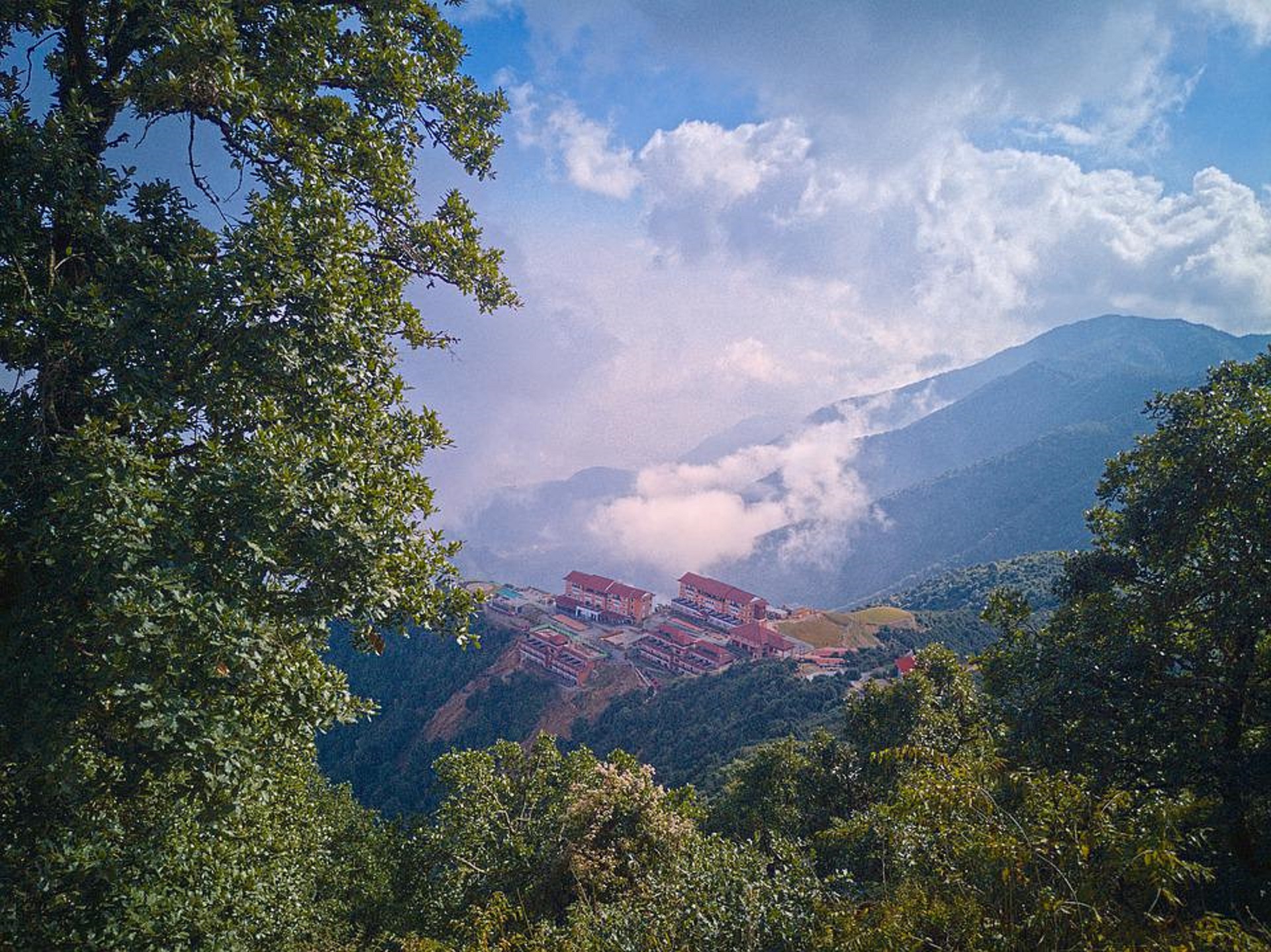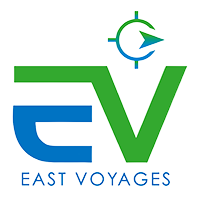- Visit the beautiful sight of Kathmandu, Durbar Square,

HIGHLIGHTS OF THE TOUR
- Pashupatinath temple, Listed as one of the eight Cultural World Heritage Site by UNESCO, Kathmandu.
- Patan: 5 km from Kathmandu Patan also known as Lalitpur is the city of fine arts, enclosed withing 4 stupas said to be built in 3rd century AD, by Emperor Ashoka.
- Swayambhunath: Located approximately 4 km west of Kathmandu, Buddhist stupa this is said to be 2500 years old.
- Pokhara; The rare combination of snow-clad peaks and snow fed lakes and rivers has helped to make the valley of Pokhara.
- Sarangkot: It offers the breath taking panoramic views of the Annapurna Mountain Range.
- Boat ride at Phewa Lake.
- Chitwan: Activities include; elephant ride, canoe ride, nature walk/bird watching, village tour, local ethnic cultural dance.
DETAILED ITINERARY
Day 01- Arrive Kathmandu
Meeting and assistance on arrival at Kathmandu airport.
Rest of the day at leisure.
Overnight stay at hotel
Day 02- Kathmandu
Breakfast at hotel
Post breakfast full day tour of Kathmandu Durbar Square, Swayamhbunath and Patan.
Kathmandu Durbar Square: Listed as one of the eight Cultural World Heritage Site by UNESCO, Kathmandu Durbar Square is cluster of ancient temples, palaces, courtyards and streets that date back to the 12th and 18th centuries. The visit of Durbar Square includes the emple of Living Goddesses, who acknowledges the greetings of the devotees from the balcony of her temple residence, the Hanuman Dhoka Royal Palace, the historic seat of the Royalty; the magnificent Taleju Temple towering 40 meters. The capital takes its name from the giant pagoda of Kasthamandap, which is said to have been built of a single tree. The Kasthamandap has been destroyed in recent massive earthquake and will take some time to rebuild it. It has been the main focal point of the city’s social, religious and political from the Malla kings.
Swayambhunath: Located approximately 4 km west of Kathmandu, Buddhist stupa this is said to be 2500 years old, The stupa which forms the main structure is composed of a solid hemisphere of brick and earth supporting a lofty conical spire capped by a pinnacle of copper gilt. Painted on the four sided base of the spire are the all-seeing eyes of Lord Buddha. This hill is a mosaic of small Chaityas and Pagodas temples. It is one of the holiest Buddhist Chaityas in Nepal and oldest of its kind.
Patan: 5 km from Kathmandu Patan also known as Lalitpur is the city of fine arts, enclosed withing 4 stupas said to be built in 3rd century AD, by Emperor Ashoka. The city retains much of the old charm with its narrow streets, brick houses and multitude of well-preserved Hindu temples, Buddhist monasteries (vihars) and monuments. Here you will visit the Shikahara style Krishna Temple built by King Siddhi Narshing Malla, Hiranya Varna Mahavihar – dating from the 12th century, the three-storied shrine, also known as the Golden Temple. A trip to the Tibetan Refugee Camp and the Handicraft Centre will also be done while visiting Patan, where you will witness the hand weaving of Tibetan carpets and moulding of metal statues.
Overnight stay at hotel.
Day 03- Kathmandu – Pokhra (approx.. 06 hours)
Breakfast at hotel
Post breakfast drive to Pokhra. Pokhara; The rare combination of snow-clad peaks and snow fed lakes and rivers has helped to make the valley of Pokhara (210kms/131 miles from Kathmandu) one of the most picturesque natural attractions in the kingdom. The altitude of Pokhara varies from 780 m to 1350 m. It is located virtually in the geographical center of Nepal. Located on the main road between Kathmandu and Bhairahawa, there may be no other place in the world from where Great Himalayas peaks can be admired from such a close distance. Three out of ten highest mountains in the world; Dhaulagiri, Annapurna and Manaslu – are within a linear distance of 50 km from the city. The Bindhyavasani Temple on its well-kept platform overlooks a modest amusement park. Phewa Lake, Skirted by a large numbers of unpretentious lodges and simple restaurant, is the most congenial spot for visitors. Due to its proximity to the Annapurna mountain range, the city is also a base for trekkers undertaking the Annapurna Circuit through the ACAP region of the Annapruna ranges in the Himalayas. The city offers a combination of nature and culture and is mostly known as the gateway to the trekking route “Round Annapurna”. Pokhara is also home of many Gorkha Soldiers.
On arrival check in at hotel. Rest of the day at leisure.
Overnight stay at hotel.
Day 04- Pokhra
Early morning visit Sarangkot to view sunrise over Himalayas (subject to weather permit).
Sarangkot: It offers the breath taking panoramic views of the Annapurna Mountain Range. Situated very close to Pokhara town, it is a semi-developed village located on a hilltop. One has to leave early in the morning while it is still dark to catch the sunrise. Later in the day the clouds gather around the mountains. It has great views in all directions. Pokhara and Phewa lake are to the south. The grand Annapurna panorama is to the north and rolling hills to the east. To the west is a distant view of Mt. Dhaulagiri (8167m).
Return hotel visiting Bindebasini temple en-route.
Bindebashini Temple: This is one of the oldest temples in Pokhara. Legend says that when Pokhara was a part of Kaski Kingdom, the main deity of the temple, Goddess Durga, was brought from India. Apart from the peace and tranquility that can be felt in this region, the premises of the temple offers a good view of the Himalaya on a clear day. The temple is in the area of the Bazaar; hence, a journey of the old bazaar can be combined with a visit to the temple.
Breakfast at hotel.
Late morning; visit Seti Gorge, Davis Fall, Gupteshwor Cave, Tibetan Refugee camp and Boat ride on Phewa Lake.
Seti Gorge: it is a mysterious wonder of Pokhara. Originated from the Machapuchhare glacier, Seti (means white in Nepali) River runs through the main city area in about 40 meters depth The best place to catch the glimpse of the Seti River is the park just north of Old Pokhara near Gurkha Museum. The river provides a perfect view of its dreadful rush before it disappears at Bagar into deep gorge. It is also visible from K I Singh Brider .
Davis fall’s: Witness a unique waterfall that lies 2 Km from central Pokhara City. The water fall directly goes into a deep and narrow canal with no ends. It is believed that this deadly waterfall took the life of a tourist named David, who fell down into the cannel and was never found, and hence the name David waterfall, named in his memory by the people of Pokhara. This place has many nick names like Davy’s fall, David’s fall or Davis’s fall, all mean the same thing `The Davis Water Fall’.
Gupteshwor Mahadev Cave is probably the longest and attractive cave in south Asia which is located at the pristine location of northwestern part of Pokhara, a world famous tourist destination in Gandaki zone and Kaski district.Ancestors called this place as desolate Khatri Tara. At that time water steam used to come out from this place and some courageous youngsters used to go inside and catch fishes. In 1970, 1980 and 1982 a British Expedition Organization named British course Research Cave Expedition expatiated this cave and published about it in The Atlas Great Cave of the World. This cave was formally established in 1994-01-01, which is a religious and touristic destination and called as Gupteshwor Mahadev Cave.
Tibetan Refugee Camp: Following the Chinese invasion of Tibet there was an influx of over 300,000 exiles/refugees into Nepal on the way to Dharamsala in India. It’s estimated that 60,000 settled in Nepal. 2,500 refugees cross the border every year either to make their way to India or settle in Nepal. There are 12 official containment camps, 8 in Kathmandu and 4 in Pokhara (Tashi Ling, TashiPalkhiel, Jampaling and Paljorling). There are several smaller settlements in the surrounding hillsides around Pokhara.
The Fewa (or Phewa) Lake 1.5 kilometer long, second largest lake in Nepal, offers an excellent view of the mountains and their reflections on the lake. Many tours and trekking operators and hotels are located on the lakeside. One can easily find a place to sit back, relax and enjoy great meal while enjoying scenery here. You will also enjoy 01 hrs boating on the lake. Most hotels and guest houses have traditional designs and layouts which match with the surrounding views.
Overnight stay at hotel.
Day 05- Pokhra – Chitwan (approx.. 220 Kms/ 06 hours)
Breakfast at hotel
Post breakfast drive to Chitwan. On arrival check in at resort followed by lunch.
The Royal Chitwan National Park, the lush Valley of Chitwan situated in the foothills of Churia ranges, is 75 airmails South West of Ktm, houses the first National Park of the Kingdom. The Royal Chitwan National Park is famous for its variety of Wildlife especially the Great Indian One horned Rhinoceros and the elusive Royal Bengal Tiger. It is a truly wildlife adventure of a different kind-jungle safaris on elephant backs or jeeps, bird watching, canoe rides and jungle walks. The park is situated inner Terai (low lands and consists of Sal forest, tall elephant grassland, hills, flood plains of the Narayani, Rapti and Reu rivers. It was enlisted in UNESCO World Heritage site (Natural) in 1984 and covers an area of 932 sq. km. It is home to 56 species of mammals, 49 species of amphibians and reptiles, and 525 species of birds.
Rest of the day will be at leisure.
Dinner and overnight at resort.
Overnight stay at hotel
Day 06- Chitwan
Full day activities.
Breakfast, lunch, dinner and overnight at resort.
Activities include; elephant ride, canoe ride, nature walk/bird watching, village tour, local ethnic cultural dance.
Overnight stay at hotel
Day 07- Chitwan- Kathmandu (approx.. 6.5 hours)
Breakfast at hotel
Post breakfast drive to Kathmandu. On arrival check in at hotel.
Rest of the day will be at leisure.
Overnight stay at hotel.
Day 08- Depart Kathmandu by flight
Breakfast at hotel
Post breakfast you will be transfer to airport to board the flight for onward destination.
